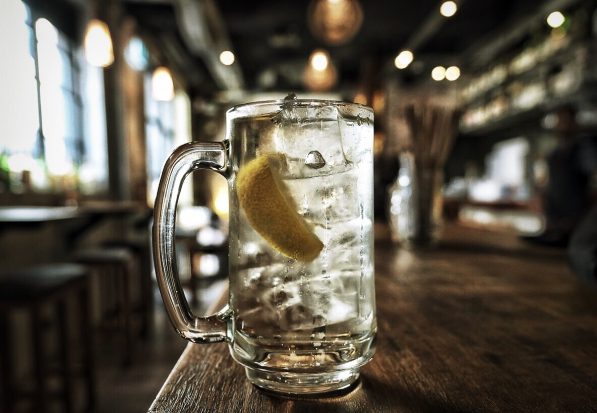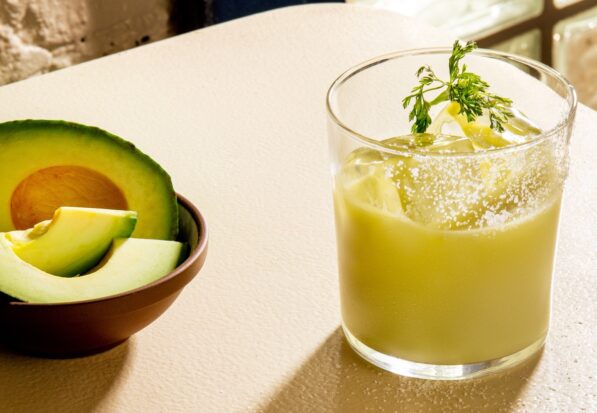While you wouldn’t think so, the Japanese highball is a true enigma.
One one hand, like all highballs, it’s probably the simplest drink you can ever make. But on the other, it’s one of the fussiest, most high-precision and definitely elegant cocktails you can drink.
The Japanese, of course, didn’t invent the highball. That honour, if you believe the mythology goes to an American at the turn of the century, but they certainly have made it their own.
Although they had been around in Japan since the 1920s, Japanese highballs really became popular after World War II, when the country was recovering from war and people wanted a cheap and easy way to have a drink.
But it was probably the alcohol brand, Suntory, that took the national love of the drink into high gear.
The company opened highball bars and designed a highball machine to guarantee perfect highballs every time straight from a tap. Cameron Pirret, Australian Brand Ambassador for Beam Suntory, agrees, saying the machines are now ubiquitous across Japan.
But what has sparked their recent popularity elsewhere? Well, Pirret believes that there are three main reasons for Highball’s return to favour – ease of execution, it’s low ABV and a world-wide love for all things Japanese.
“Consumers are now much more conscious of what they are drinking and they want drinks that are quality but also low in sugar and low ABV,” he continued. “And let’s be honest, most of the time it’s bloody hot in Australia, so we are perfectly suited for easy, yet long and refreshing drinks”.
With just two ingredients—whisky and soda water—the Japanese highball seems like it should be the most effortless drink to make.
Yet, if cocktails have taught us anything, it’s that what looks effortless is rarely simple.
Obviously, the ice you use, the whisky you choose, the degree of carbonation in the soda water, all contribute to the final drink.
But add to that equation, the glass, the ratio of whisky to the mixer, the temperature and the garnish and you soon realise there is more to this drink when done well than you might first think.
In Japan, the exercise of making a Highball is almost ritualistic with fastidious attention to detail and an almost zen-like focus. When the whisky is added, bartenders are known to stir the ice precisely 13 times clockwise before adding more ice to fill the highball glass.
In fact, the precision is taken so seriously that Japanese whisky brand Suntory Toki, developed their Toki Highball Machines. These machines produce a fizzy drink that’s like whisky Champagne, with tiny bubbles that tickling your nose.
But not every bar is going to have this machine and sadly, for all our technology, our homes do not come equipped with them. So what is a home bartender to do?
Well, Chad Choulai from Sydney’s Tokyo Bird believes that the quality of your ingredients should always the first point to consider. After all, in a two-ingredient drink, there’s nowhere for a bad component to hide, whether it’s the spirit or the mixer. But basically, it’s temperature and dilution that makes or breaks a highball.
So sure it’s a cool, casual, refreshing drink but if you really pay attention it can be absolutely sublime.
Or as Winston Churchill was fond of saying about the highball, if you’re careful about how you make it, then it becomes less of “a riddle, wrapped in a mystery, inside an enigma”.
Whisky
Note that a Japanese highball is always made with whisky not whiskey, and specifically a Japanese whisky. At Tokyo Bird, they use Suntory Toki, which Choulai points out ios a great whisky for a highball as it’s light and refreshing.
“It has very subtle notes from all three different distilleries,” he explains. “It’s essentially a blend of a Hakushu, Yamazaki, and Chita. So it is a blended whiskey, but it does have those really nice crisp apple and honey notes from the Yamazaki. It has a very, very, very light peat from Hakushu. And it has crisp nougat from the Chita. So all of that combined into a really nice light whiskey.”
Soda Water
The type of soda water can come down to personal preference, as there are subtle variations in minerality and levels of carbonation. Each of these will give a different edge to the drink. Tokyo Bird makes their soda water inhouse with the aid of a soda stream.
“The importance of our soda water is that it’s really nice and bubbly,” said Choulai. “You want something that is kind of crisp off the tongue. Very, very nice and light and very, very cold. Those are the most important parts of getting a Japanese highball right. So essentially, we’re putting it in the stream like straight away, so when we pour it, it’s fresh out of the bottle.”
Temperature
Choulai points out that temperature is also incredibly important, as the best Japanese highballs are bracingly cold. He recommends you keep everything in the fridge, from the soda Water through to the glass, until you are ready to use it.
Glassware
The highball, like the Martini and the Old Fashioned, has its own namesake glassware. Really you can use any type of tall glass but the thing to remember with the glassware that you choose is the ratio of whisky to soda. While there is no set guide, most bars do a 4:1 water to whisky mix. The ratio will often come down to personal preference, so it’s worth experimenting with different glasses to work out the ration you prefer.
Ice
With the ice, you are looking to minimise the dilution, so rectangular single blocks of ice work well. Choulai points out that you can freeze water in a takeaway container and then chip it to make a suitable block for the glass but if you’d rather use cubes, make sure they are the large ones.
“Using a single block means that the ice dilutes a lot slower because there is a larger surface area. Basically, the edges don’t dilute as quick if you’re using a big block ice. It’s really more solid, so it stays a lot colder and for longer.”
Technique
While Choulai points out that a little stir is helpful, he stresses that you don’t want to stir too much. “The metal of the spoon can affect the carbonation and you don’t want is for it to taste like a watered-down whisky,’ he said.










